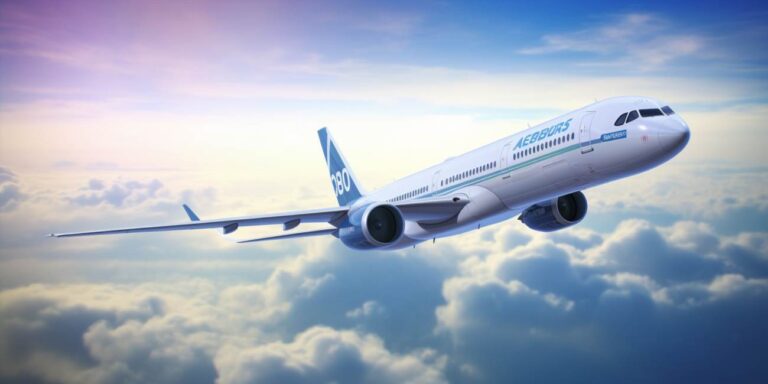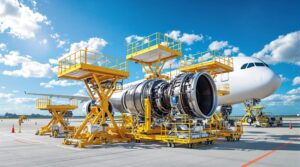Let’s start by examining the size and scope of these two giants in the aviation industry. Boeing, an American aerospace juggernaut, has been a dominant force for decades, producing iconic aircraft like the 747 and 777. Meanwhile, Airbus, a European counterpart, has steadily gained ground, especially with the success of the A320 and A380. In terms of sheer production volume, both manufacturers boast extensive fleets around the globe.
Innovation is a critical aspect of evaluating the prowess of aircraft manufacturers. Here, Airbus has carved a niche with its emphasis on technological advancements. The introduction of the A350 XWB, featuring composite materials and fuel-efficient engines, showcases Airbus’s commitment to pushing the boundaries of aerospace engineering. On the other hand, Boeing has not lagged behind, with the 787 Dreamliner embodying cutting-edge design and fuel efficiency, setting new standards in the industry.
Turning our attention to market share, both Airbus and Boeing have established a significant global presence. Airlines worldwide operate fleets from both manufacturers, with each company securing substantial orders. The battle for dominance in the commercial aviation market is a perpetual tug-of-war, with Boeing historically holding a stronger position, but Airbus making considerable strides in recent years.
When assessing the performance of aircraft, factors such as fuel efficiency, range, and payload capacity become pivotal. The Boeing 777, known for its long-haul capabilities, competes with the Airbus A350, a fuel-efficient counterpart. Each manufacturer has tailored its models to cater to specific market demands, and preferences often hinge on the unique requirements of airlines.
While Airbus has made headlines with the A380, the world’s largest passenger aircraft, Boeing’s 747 remains an iconic symbol of long-haul aviation. The debate over which manufacturer builds superior aircraft often boils down to individual preferences, operational needs, and regional considerations.
Airbus a320 vs boeing 737 – passenger comfort analysis
The Airbus A320 and Boeing 737 are two stalwarts in the aviation industry, dominating the narrow-body jet market and shuttling millions of passengers across the globe. While both aircraft have their merits, a critical aspect for passengers is the comfort they experience during the journey.
Let’s delve into the passenger comfort analysis of these aviation titans, considering factors ranging from seating arrangements to cabin ambiance.
One notable difference lies in the seat width, a crucial factor for passenger comfort. The A320 typically boasts a slightly wider cabin compared to the 737. This extra width can translate into a more comfortable seating experience, especially during longer flights where the importance of personal space becomes pronounced.
The seat pitch, representing the distance between seats, is another parameter influencing passenger comfort. While configurations can vary between airlines, generally, the A320 tends to offer a marginally better seat pitch compared to the 737. This can be a game-changer, especially for tall passengers who appreciate that extra legroom.
When it comes to cabin noise, the A320 takes a lead. With its advanced design and technology, the A320 tends to provide a quieter cabin environment compared to the 737. Reduced noise levels contribute significantly to a more pleasant and relaxing journey for passengers.
Now, let’s shift our focus to in-flight entertainment (IFE). Both aircraft typically offer modern IFE systems, including seatback screens and a variety of entertainment options. However, the specific offerings can vary by airline and configuration. Some A320 operators may provide a more extensive range of entertainment content, giving passengers more choices to tailor their in-flight experience.
Considering the overall cabin ambiance, passengers often note the importance of lighting and interior design. The A320 tends to feature larger windows, allowing more natural light to fill the cabin. Additionally, the cabin design of the A320 may create a perception of more space, contributing to a more comfortable atmosphere.
For those concerned with restroom facilities, both aircraft generally offer standard lavatory configurations. However, the layout and size can vary between airlines. Some passengers may find the restroom layout of the A320 more convenient or spacious, enhancing the overall comfort of the journey.
It’s crucial to note that passenger comfort is subjective, and individual preferences play a significant role. Factors like airline, specific aircraft configuration, and personal preferences can sway the comfort perception in favor of either the Airbus A320 or Boeing 737.
Airbus a350 vs boeing 787 – operating costs review
The comparison between Airbus A350 and Boeing 787 involves a thorough examination of their operating costs, fuel efficiency, maintenance costs, and pilot training expenses.
Starting with fuel efficiency, both aircraft feature advanced aerodynamics and lightweight materials, contributing to their fuel-saving capabilities. However, the Airbus A350 stands out with its innovative design, incorporating a fuel-efficient Rolls-Royce Trent XWB engine. This engine not only enhances overall performance but also significantly reduces fuel consumption, making the A350 a leader in fuel efficiency.
When delving into maintenance costs, it becomes evident that the Boeing 787 boasts an edge. The Dreamliner employs a higher percentage of composite materials in its construction, minimizing susceptibility to corrosion and reducing the frequency and complexity of maintenance tasks. This translates into lower maintenance costs over the aircraft’s lifecycle, a factor that airlines keen on operational economics consider paramount.
As for operating costs, both aircraft manufacturers have incorporated advanced technologies to enhance efficiency. However, the Airbus A350 has strategically focused on minimizing overall operational expenses. Its aerodynamic design, coupled with fuel-efficient engines, results in reduced fuel consumption and subsequently lowers operating costs for airlines.
Turning attention to pilot training expenses, the comparison reveals nuanced differences. The Boeing 787 benefits from a certain level of commonality with other Boeing models, facilitating a smoother transition for pilots already trained on Boeing aircraft. This can contribute to reduced pilot training expenses as existing knowledge and skills are transferable. On the other hand, the Airbus A350 introduces a new cockpit layout and system architecture, requiring pilots to undergo specific training for this particular aircraft.
Boeing 777 vs airbus a380 – cargo capacity and range prosperity
The Boeing 777 and Airbus A380 stand as titans in the aviation industry, each boasting impressive capabilities in terms of payload, flight distance, and freight volume. Let’s delve into the nuances that set these giants apart.
Firstly, when it comes to payload, the Boeing 777 takes the lead. With a maximum payload capacity of 347,100 pounds, it outshines the Airbus A380, offering airlines the flexibility to transport a substantial amount of cargo without compromising efficiency. This advantage is crucial for carriers aiming to optimize their cargo operations and capitalize on the lucrative freight market.
However, the Airbus A380 is no slouch in this department. While its payload falls slightly behind the Boeing 777 at 331,000 pounds, it compensates with its unique design and spacious interior, making it a preferred choice for transporting oversized or awkwardly shaped freight.
When evaluating flight distance, the Boeing 777 once again emerges as a formidable contender. Boasting an exceptional range of 8,555 nautical miles, it enables non-stop flights between distant destinations, opening up new possibilities for airlines seeking to connect long-haul routes efficiently. This capability makes the Boeing 777 a popular choice for transcontinental flights and extended global operations.
On the other hand, the Airbus A380, while falling slightly behind the Boeing 777 in terms of flight distance, still offers an impressive range of 8,200 nautical miles. This range is more than sufficient for most long-haul routes, allowing airlines to cover vast distances without the need for layovers, enhancing overall operational efficiency.
Turning our attention to freight volume, both aircraft have unique attributes. The Boeing 777, with its well-designed cargo hold, accommodates a freight volume of 30,370 cubic feet. This provides ample space for various types of cargo, ensuring airlines can maximize their revenue potential by optimizing the utilization of available space.
In comparison, the Airbus A380 offers a larger freight volume of 40,000 cubic feet. This substantial cargo capacity makes the A380 an attractive choice for airlines with a high demand for freight transportation, particularly for industries requiring the shipment of large quantities of goods.






